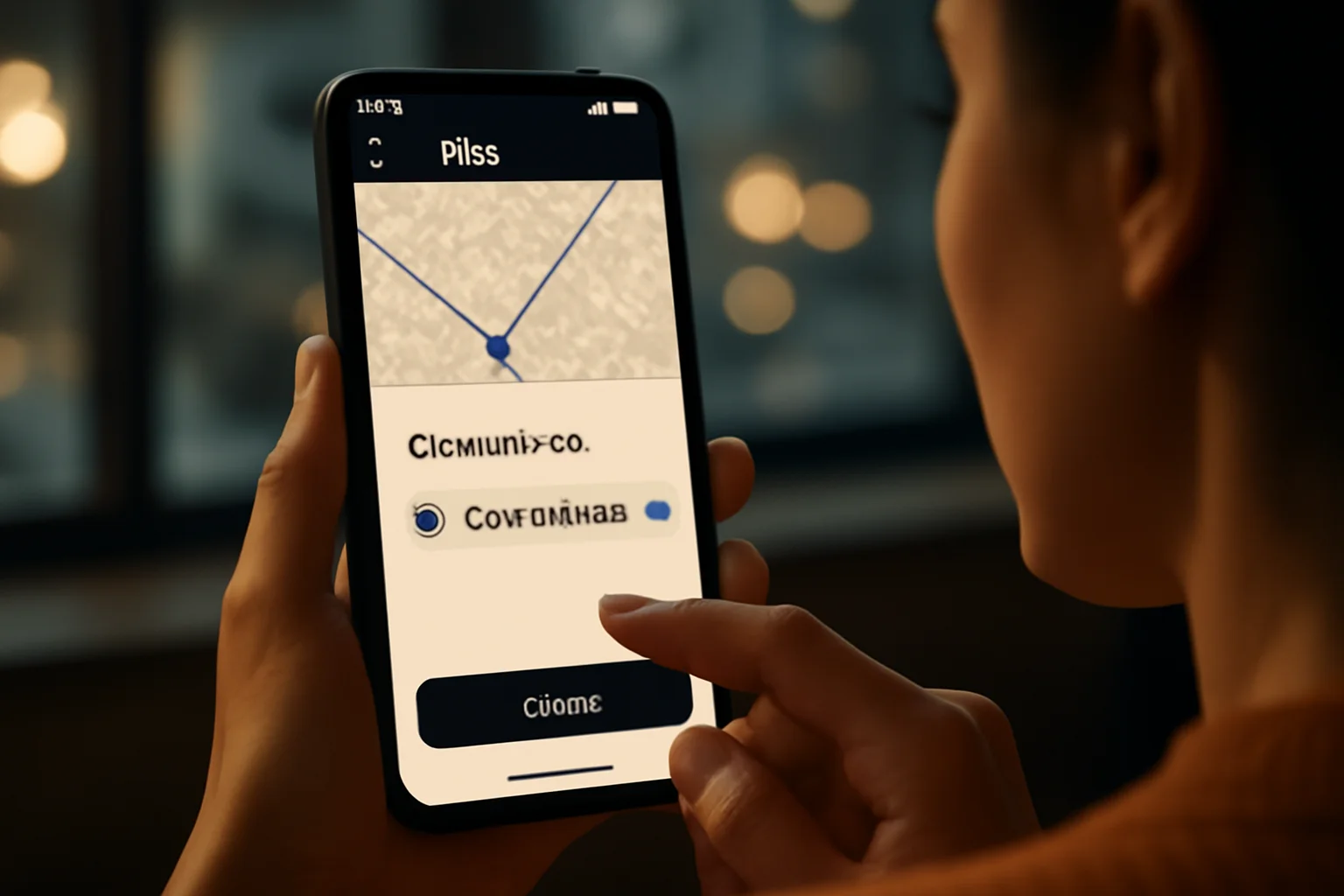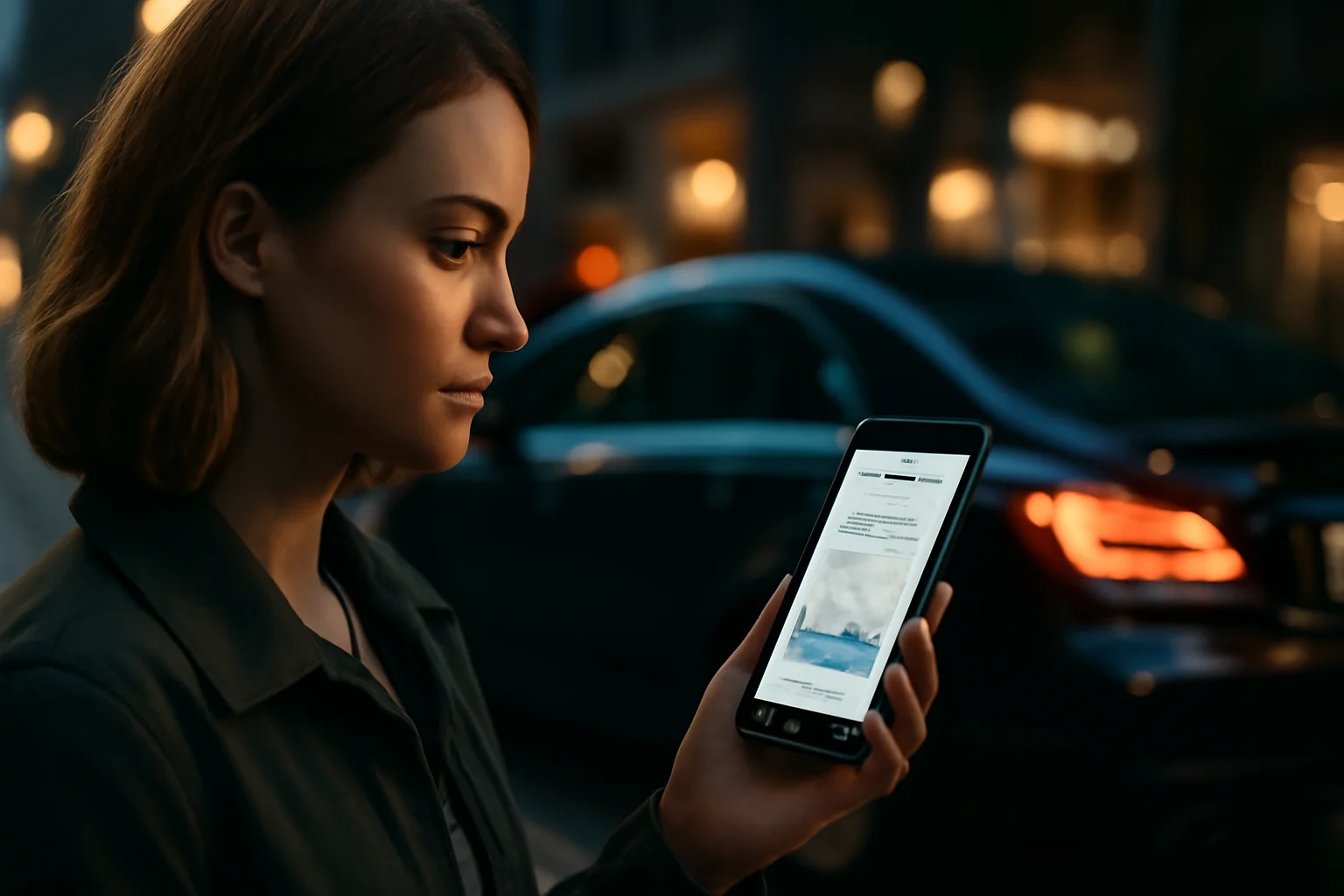
Uber is Rolling Out a Feature in the U.S. That WIl Pair Women Drivers With Women Riders
Probably for the best.
Published July 25, 2025
Advertisement
Advertisement
1. Women Take the Wheel

Uber is rolling out a groundbreaking new feature in the United States that will let women riders and drivers choose to be paired with other women for their trips.Dubbed "Women Preferences," the pilot program launches in Los Angeles, San Francisco, and Detroit, with hopes of expanding across more cities soon.This initiative, aimed at increasing safety, comfort, and control, comes after years of feedback from women who wanted more agency over their rideshare experience.For women riders, the options are threefold: request a woman driver on-demand, reserve one in advance, or set a standing preference in their account settings.The chances of getting a woman driver increase significantly, especially with advance reservations, though immediate matches aren't always guaranteed.On the driver's side, women can opt to pick up only female passengers by toggling on a dedicated setting, which can be switched off at any time.This provides women drivers more confidence and opportunities to earn, even during late hours, without compromising their sense of security.Uber’s vice president of operations, Camiel Irving, says the company is focused on giving women more choice, more control, and more comfort, based on their direct input.Since launching the feature in Saudi Arabia in 2019—following the country's historic law allowing women to drive—Uber has expanded Women Preferences to 40 countries and logged over 100 million women-preferred trips globally.Both riders and drivers are responding with enthusiasm, viewing the new feature as a long overdue step toward a safer, more personalized experience.If the pilot succeeds, Uber is committed to scaling Women Preferences nationwide, fundamentally changing how women navigate ridesharing in America.
Advertisement
2. Building a Safer Ride

For years, safety and comfort have been top priorities—and top challenges—for women who use ride-hailing platforms like Uber and Lyft.Company data has revealed thousands of reports of sexual assault and misconduct between 2021 and 2022, amplifying calls for innovative safety features.Uber’s response is not just reactive but proactive: Women Preferences empowers users to assert greater control over who they share a car with.Women drivers, who currently make up about one-fifth of Uber’s U.S. driving force, now have more options to maximize earnings during peak hours while feeling more secure.The feature’s flexibility is key, allowing drivers to toggle preferences on and off depending on their needs and comfort level throughout the day.Uber’s strategy includes educating users on how to access the new options, so both drivers and riders can seamlessly integrate Women Preferences into their routines.Advanced matching technology prioritizes user settings, but still provides fallback options in case wait times become excessive or a match isn’t possible.Competitor Lyft has launched similar programs, indicating a broader industry shift toward gender-specific options that address persistent safety issues.Uber’s executive team says these new choices are not only about responding to negative headlines but about building genuine trust and confidence in the platform.The company views the feature as essential to making ride-sharing accessible and appealing to more women, especially those who previously hesitated to participate.Through continuous feedback and iterative development, Uber aims to set a new global standard for gender-sensitive transportation.
Advertisement
3. How Women Preferences Works

The new feature is designed for ease of use and maximum flexibility, addressing the daily realities and concerns of women using Uber.Women can request a woman driver for immediate trips by simply selecting the “Women Drivers” option when booking in the app.For those who like to plan ahead, the Reserve feature allows riders to book rides with women drivers in advance, ensuring peace of mind for scheduled travel.App settings also allow women riders to set a standing preference for women drivers, so every ride request prioritizes their comfort automatically.While Uber can’t guarantee a woman driver for every ride, these new tools significantly increase the likelihood of a match, especially in larger cities.Women drivers can likewise set their own preferences, ensuring they are matched only with women riders if desired.This system not only supports rider safety but also creates new economic opportunities for women drivers who might otherwise avoid late-night or high-demand shifts.Importantly, both riders and drivers can turn off the preference at any time, keeping their experience as flexible as their changing needs require.Feedback from international rollouts has driven constant improvements, helping Uber fine-tune the feature for the U.S. market.Ultimately, Women Preferences promises a smoother, safer, and more empowering rideshare experience for millions of women on the platform.
Advertisement
4. The Global Road to the U.S.

The journey of Women Preferences began in Saudi Arabia in 2019, just after women were legally allowed to drive—a milestone that inspired Uber’s first gender-preference feature.The overwhelmingly positive response from women drivers and riders there prompted Uber to expand the program rapidly.Over the past six years, the feature has reached more than 40 countries, spanning continents from South America to Europe, Asia, and Australia.In each region, the company adapted the program based on local feedback and cultural considerations, refining its approach with every rollout.To date, more than 100 million rides have been completed using the Women Preferences setting, signaling global demand for increased autonomy and safety.Uber’s leadership credits this international experience with giving them the confidence and know-how to bring Women Preferences to American cities.Launching in Los Angeles, San Francisco, and Detroit is a strategic move, chosen based on high user demand and robust urban infrastructure.Uber plans to monitor these initial markets closely, gathering data and feedback to ensure the feature works as intended before expanding further.If successful, the program could become a blueprint for future gender-focused offerings across the transportation industry.The U.S. rollout stands as both a response to years of advocacy and a forward-looking bet on women’s evolving role in mobility.
Advertisement
5. Responding to Industry Pressure

The launch of Women Preferences arrives at a time of heightened scrutiny for the ride-hailing industry over passenger and driver safety.Incidents of harassment, assault, and violence have put immense pressure on companies like Uber and Lyft to act decisively.Lyft’s "Women+ Connect" program, which pairs women and nonbinary riders and drivers, set an industry precedent when it launched in 2023.Uber’s iteration focuses solely on women, aiming to provide a targeted response to a clear user demand for safer, more controlled ride experiences.Both platforms have rolled out a suite of additional safety tools—such as rider verification, PIN check-ins, and enhanced background checks—to further build trust.However, gender preference features address a specific and urgent concern: the ability to choose who you share a ride with.Uber's executives acknowledge that while technology can't eliminate all risks, empowering users to make informed choices marks a significant step forward.Industry analysts see this as part of a larger trend toward personalized, safety-first services in the gig economy.For drivers, these changes can mean higher satisfaction, improved retention, and more earning opportunities, especially for women entering the industry.By leading the charge, Uber is not only reshaping its platform but also redefining what safety and choice mean in the world of shared transportation.
Advertisement
6. Empowerment for Women Drivers

Women drivers have historically faced unique challenges on ride-hailing platforms, from concerns about late-night fares to worries about passenger behavior.With Women Preferences, Uber is working to break down barriers that have limited participation and earnings for women in the past.By toggling the preference for women riders, female drivers gain more confidence to accept rides at any time of day, knowing their comfort is prioritized.Uber’s leadership, including executives who once drove for the platform themselves, highlight the extra layer of security that comes from matching with women.This empowers women to maximize their income without sacrificing peace of mind, particularly during high-demand hours when they can earn more.Feedback from international users has shown that these preferences lead to longer tenures and higher engagement from women drivers.As a result, the pool of women drivers is expected to grow, creating a virtuous cycle of availability and demand.For new and aspiring drivers, the feature removes one of the major psychological hurdles to joining the platform.Uber continues to gather and implement feedback, aiming to make Women Preferences even more flexible and effective for all users.The feature isn’t just a tech upgrade—it’s a statement about the company’s commitment to equity and empowerment in a traditionally male-dominated sector.
Advertisement
7. Addressing Limitations and Looking Ahead

While Women Preferences marks a major step forward, Uber acknowledges the feature’s current limitations and areas for growth.With only about 20% of drivers in the U.S. being women, immediate matches aren’t always possible—especially in smaller cities or during off-peak hours.To mitigate this, Uber offers fallback options, ensuring users can still get rides promptly if a preferred match isn’t available.Company leaders are transparent about the challenges, noting that the rollout is as much about learning as it is about delivering results.The success of the program depends on user adoption, continuous feedback, and ongoing recruitment of more women drivers.Uber’s data-driven approach means every ride, match, and preference setting informs future improvements.As demand grows and the driver pool diversifies, the system’s effectiveness and reach are expected to improve steadily.Uber is also evaluating expansion to more cities based on pilot outcomes, with an eye on nationwide implementation if all goes well.This iterative process reflects the reality of large-scale tech innovation: start small, learn fast, and scale smart.For riders and drivers alike, patience and participation are key to building a better, safer platform for everyone.
Advertisement
8. User Experience in Action

The true test of Women Preferences lies in everyday moments—booking a late-night ride, navigating an unfamiliar city, or driving during peak hours.Women riders report feeling an immediate sense of relief and confidence when they know their driver is also a woman.The ability to reserve a woman driver in advance offers extra reassurance for early morning airport trips, work commutes, or nights out.For drivers, the option to limit rides to women passengers is a practical tool, especially for those who previously avoided certain shifts.The app’s interface makes it easy to toggle preferences on and off, allowing users to adapt the feature to their unique needs.Feedback channels within the app encourage ongoing dialogue between users and Uber’s development teams.Stories from international markets highlight the transformative impact of Women Preferences, with many users reporting higher satisfaction and fewer negative incidents.Uber’s investment in user education ensures that everyone understands how to leverage the new options effectively.The program’s design puts control back in the hands of users, delivering on the promise of personalized, safer mobility.Every trip completed with Women Preferences brings Uber closer to its vision of a platform where comfort, safety, and choice are standard—not exceptional.
Advertisement
9. Shaping the Future of Mobility

The introduction of Women Preferences is more than a feature update—it’s a sign of changing attitudes and priorities in the tech and transportation industries.Uber’s move reflects a growing recognition that diverse users have diverse needs, and that one-size-fits-all solutions are no longer sufficient.The company’s willingness to listen, adapt, and invest in tailored options sets a precedent for others in the sector.As technology evolves, features like gender preferences may become standard, driving competition and innovation across platforms.Uber’s experience in international markets demonstrates the universal demand for safer, more inclusive transportation.With each successful rollout, the case grows stronger for expanded user control in other aspects of ridesharing—such as accessibility, language, and additional safety preferences.Industry observers say this evolution could inspire broader changes in how tech companies design for equity and well-being.Ultimately, Women Preferences is a blueprint for how listening to users and responding to their needs can drive both loyalty and market leadership.In an era of rapid change, Uber’s bet on women’s comfort and confidence is shaping the next generation of mobility.The road ahead promises new milestones, greater choice, and a renewed focus on the individual experience.
Advertisement
10. Redefining the Rideshare Experience

With the pilot launch of Women Preferences, Uber signals a turning point in its mission to build a safer, more user-focused platform.Women riders and drivers alike now have tools to personalize their journeys, pushing the industry toward higher standards of accountability and care.Every aspect of the program—from the app interface to the feedback loop—reflects a commitment to transparency and adaptability.Early responses suggest strong demand and positive sentiment, but the true impact will unfold over the coming months as more users engage with the feature.If successful, Women Preferences could fundamentally alter how millions of women approach ride-hailing, turning apprehension into empowerment.As the pilot expands and data pours in, Uber will continue refining the experience, always guided by the voices and choices of its users.This evolution is not just about technology; it’s about shifting the culture of mobility to one that values safety, dignity, and personal agency.The journey is far from over, but the direction is clear: a future where every rider and driver has the freedom to choose what feels right for them.In a world of constant movement, Uber’s latest move gives women—and the entire industry—a new way forward.The rideshare revolution has entered a new era, with choice, comfort, and safety steering the way.
Advertisement
Advertisement
You May Also Like

Coca-Cola Will Launch a Version of Coke With Cane Sugar in the U.S. This Fall
That's pretty good, right?

Shia LaBeouf and FKA Twigs Reach Settlement in Sexual Assault and Battery Lawsuit
This was still going on?




